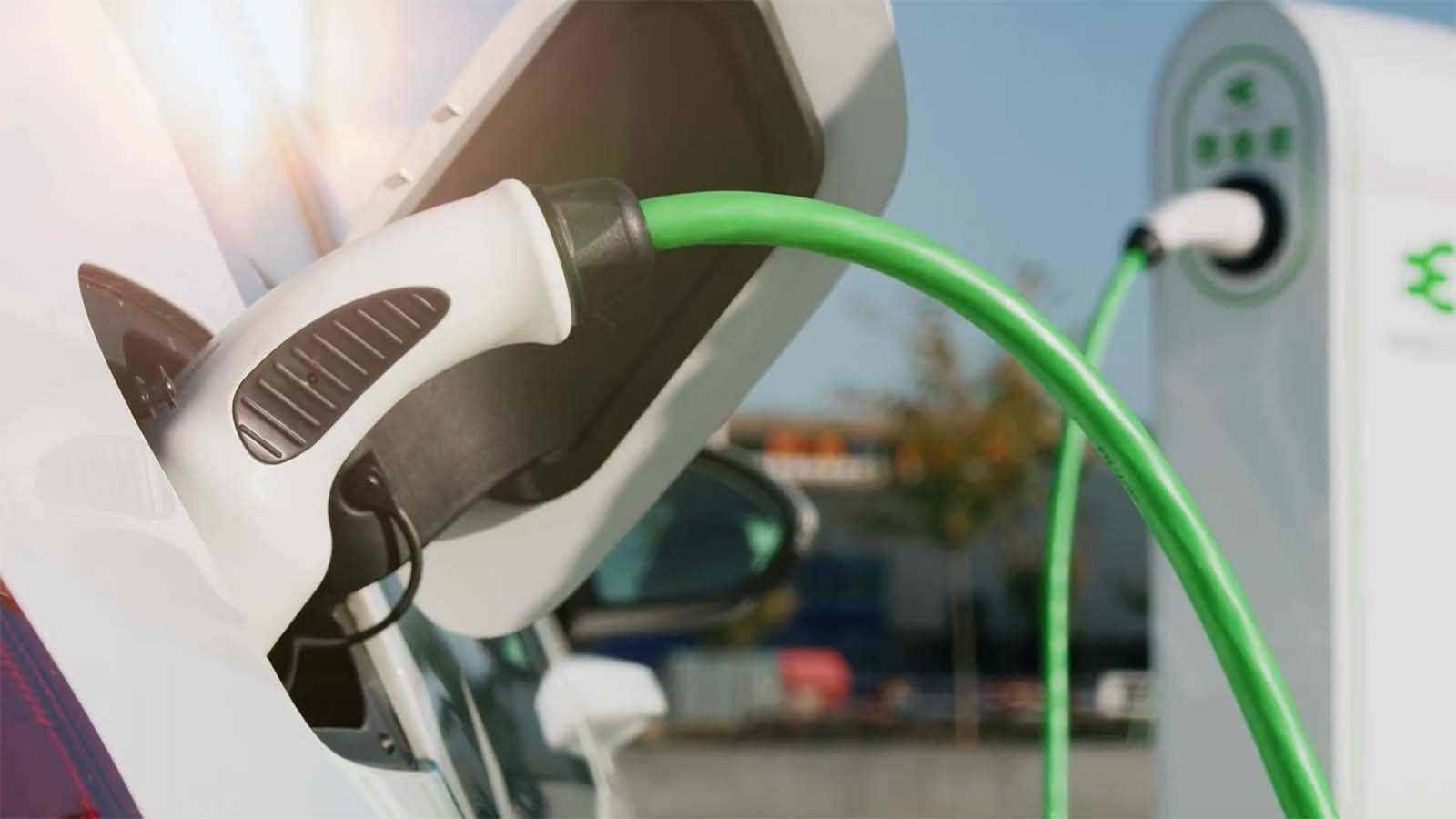
Transforming transportation in America
Three stories about actions that made transportation cleaner
Going mobile
Pete Townshend may be British, but the leader of The Who best captured the American love of the road in two simple lines: “When I’m driving free, the world’s my home.”
Access to cars for the masses revolutionized 20th century American life, opening new opportunities for where we could live, work, go to school, go on vacation or just go for a drive. It’s no wonder that cars became a main character in American culture, from the songs of the Beach Boys to Bruce Springsteen, from “American Graffiti” to “Fast and Furious.”
Yet a few not-so-funny things happened on the way to the open road. Not only is driving a few thousand pounds of steel, rubber and plastic at high speeds dangerous, killing millions of Americans in a little over a century. Our dependence on cars and trucks also has polluted our air and disrupted the climate, all while leaving millions of us stuck in traffic for as many as 100 hours per year.
A better route ahead
It’s hard to imagine an America without cars and trucks.
But as cycling advocates, climate activists, transit riders, urbanists, YIMBY activists and others coalesced into something of a nascent movement in the early 21st century, it’s not hard to imagine an America where more people go where they want to go on foot, a bike, a bus or a train. And when Americans do drive, more of us — and perhaps all of us within a decade or two — will do so in cars and trucks that run on clean electricity, not dirty gasoline.
PIRG, Environment America, Frontier Group and other Public Interest Network organizations have been at the forefront of this effort to transform transportation in our country, spurring on the standards that are bringing us more cars that pollute less or not at all, the decisions that will allow kids and others to ride on buses that don’t spew diesel exhaust, and the investments in alternatives to highway boondoggles that belong in the past.
Video credit: gibsson james via Shutterstock

‘Smell-A’
In 1990, the smog in Los Angeles was bad, reminding residents why the city had earned the nickname “Smell-A.”
Acrid pollution permeated the city’s air. That summer saw 41 days of bad-air alerts. Incredibly, that was an improvement over previous years, but little solace for the children, asthma sufferers and others stuck indoors because the air was unsafe to breathe.
The smog had one silver lining, however. The problem fueled CALPIRG’s advocacy and action around the Low-Emission Vehicle (LEV) program. Adopted later that year, the program set the strictest tailpipe emission standards in the nation and required automakers to produce a small number of zero-emission vehicles by the end of the decade.
Not only did the CALPIRG-backed law help clean up California’s air, but it also prompted other states to enact LEV standards of their own.
MASSPIRG follows suit
Soon after California’s LEV program went into effect, MASSPIRG helped win a statewide law that committed Massachusetts to California’s standards whenever they were stronger than those in place at the federal level.
When other Northeastern states adopted the same standards, the auto industry began to push back. Automakers argued they couldn’t meet the standards adopted by Massachusetts, California and other states within the timeframe allotted. Oil companies argued the law would require new special fuels.
Building support for our position at the National Governors Association meeting and other events, MASSPIRG countered each industry argument -- for example, by pointing out that some Ford vehicles already adhered to the LEV standards. MASSPIRG’s advocacy helped convince Gov. William Weld to hold strong in his commitment to cleaner cars.
Standards lifted higher and higher
In 1999, California upped the ante by adopting the LEV II program.
This new and improved initiative added three changes to the original program. Sport cars, minivans and trucks were now subject to the same clean car standards as any other vehicle. It also changed and strengthened emission standards. And it established tougher new requirements for future car models to be made between 2004 and 2010.
In New Jersey, NJPIRG helped win LEV II standards in 2004, after over 10,000 citizens showed their support for the program. Dena Mottola-Jaborska, then executive director of NJPIRG, called it “the most important clean-air policy move forward in at least the last 20 years in New Jersey.”
Winning the 2009 federal Clean Car standards
After 14 states, comprising one-third of the U.S. population, had adopted clean car standards, the Obama administration announced on May 18, 2009 new federal Clean Car standards.
It took two decades, but the work begun in California had spread, with the help of PIRG organizers and members, across the country. This success changed the political equation for the Obama administration, making it easier to bring the auto industry to the table and negotiate a hard-won agreement to produce cleaner cars -- a victory for clean air, public health and climate protection.
Photo: Allen.G via Shutterstock

MASSPIRG Legislative Director Rob Sargent speaks at an April 4, 1995 press conference denouncing the auto industry attack on the state Clean Air Law. At left: Boston Mayor Tom Menino. Behind Sargent stands Cathleen Douglas Stone, Boston's Chief of Environmental Services. Photo by staff

NJPIRG’s Kristen Cevoli, Ajayi Harris, Dena Mottola-Jaborska, Gov. Jim McGreevey, NJPIRG’s Sarah Bennet, Doug O’Malley, Matt Garafalow. By staff

Environment America’s Nathan Willcox with President Barack Obama. Photo by The White House

Bye, bye diesel
In the next 10 to 15 years, when the big yellow school bus stops at the corner in communities across the country, something will be missing: the soot that once spewed from its tailpipe.
That’s because of growing local, regional, state and federal investments in replacing diesel-powered buses with electric buses -- reducing the number of kids exposed to the diesel exhaust that has been linked to asthma attacks, other respiratory ailments and even cancer.
States get on board with electric buses
Since our first report on the subject, PIRG has become a leading voice on the issue of electric school buses. The report detailed case studies of the first cities and school districts to adopt electric buses, the first being in California.
The Golden State arrived fashionably early to the electric school bus party. In 2012, the Kings Canyon school district made the first-ever commitment to electrifying its school buses. Prior to this decision, 70 diesel- and gas-powered buses would travel over 1 million miles each year, adding to some of the most polluted air in the nation. Now, kids can board the bus unaccompanied by the smell of diesel fumes.
In 2017, Twin Rivers school district in California became another early joiner to deploy zero-emission school buses. Working in conjunction with two other school districts, Twin Rivers was awarded $7 million to pilot an electric school bus program and was given 16 buses. By 2018, that number jumped to 25 electric buses. Today, the school district has committed to 40 electric school buses.
Massachusetts is another state with more school districts jumping on board the electric bus. In 2015, the first cold weather pilot program was deployed in three different school districts across the state. The conclusion: Electric buses can indeed operate successfully in cold environments — a finding critical to the electric school bus movement.
Winning the bipartisan infrastructure bill
Success in the states paved the way for national action: the bipartisan infrastructure bill.
Passed by Congress on Nov. 5, 2021, it allocated $2.5 billion specifically to zero-emission school buses and gave another $2.5 billion to low-emission school buses (which could be spent on electric buses).
PIRG’s Matt Casale brought attention to the need for electric buses and educated and informed the public about the benefits of the transition. The report “Blueprint for America,'' a joint project of PIRG, Environment America and Frontier Group, made the case for a robust federal investment in helping states and local governments transition to electric buses.
State PIRG staff and our state environmental groups also reached out to locally elected officials to win endorsements for the bill. More than 360 of them signed our letter of support.
Photo credit: Dominion Energy
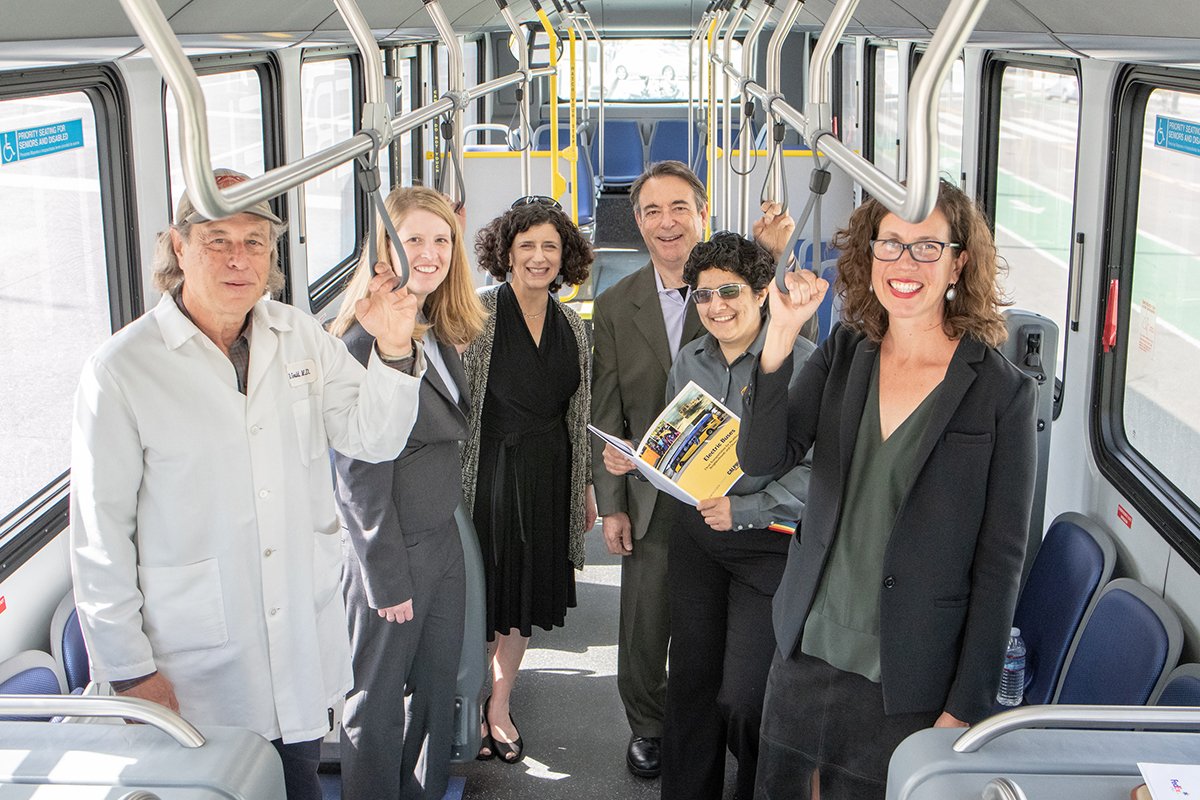
Environment California’s Michelle Kinman (second from left) and CALPIRG Executive Director Emily Rusch (right) taking a tour of an electric bus. By Ricky Mackie Photography

MASSPIRG’s Matt Casale speaks at an electric buses press event in May 2018. By Athel Rogers
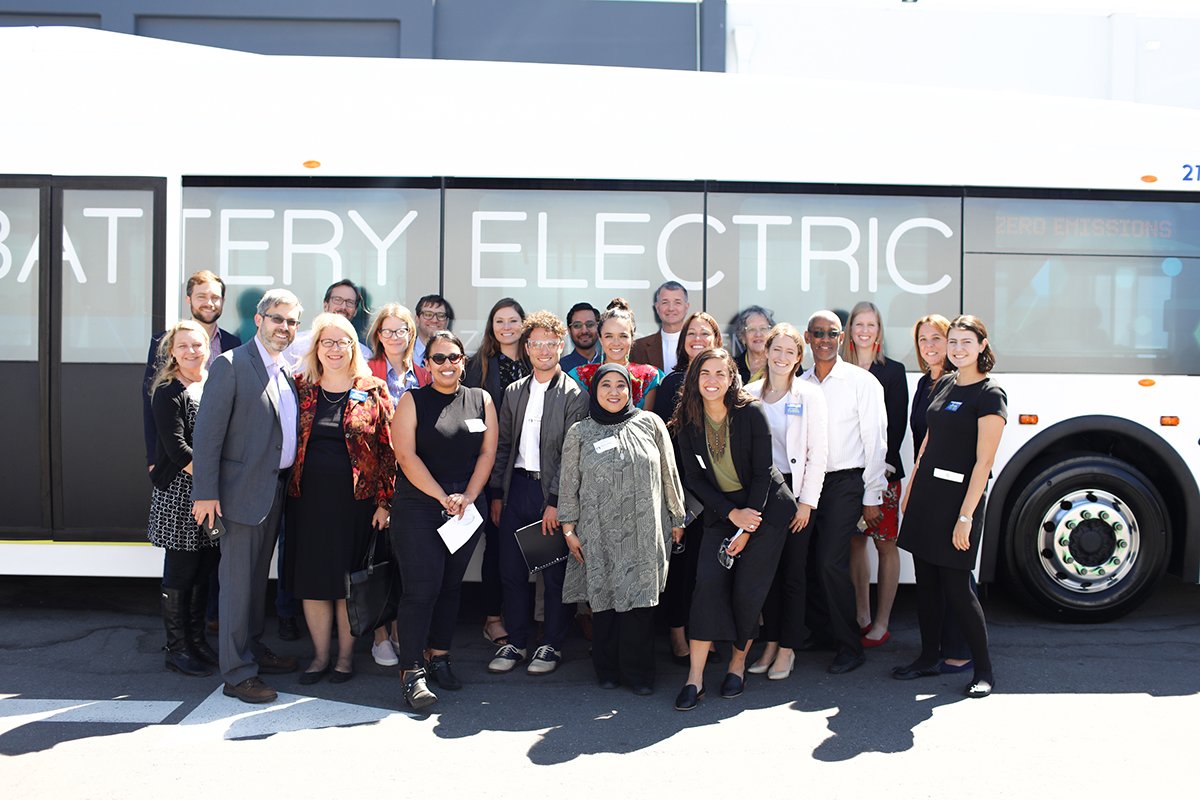
Environment America staff from around the country and coalition partners tour a Proterra electric bus facility in California in September 2018. By Erica Kawamoto Hsu
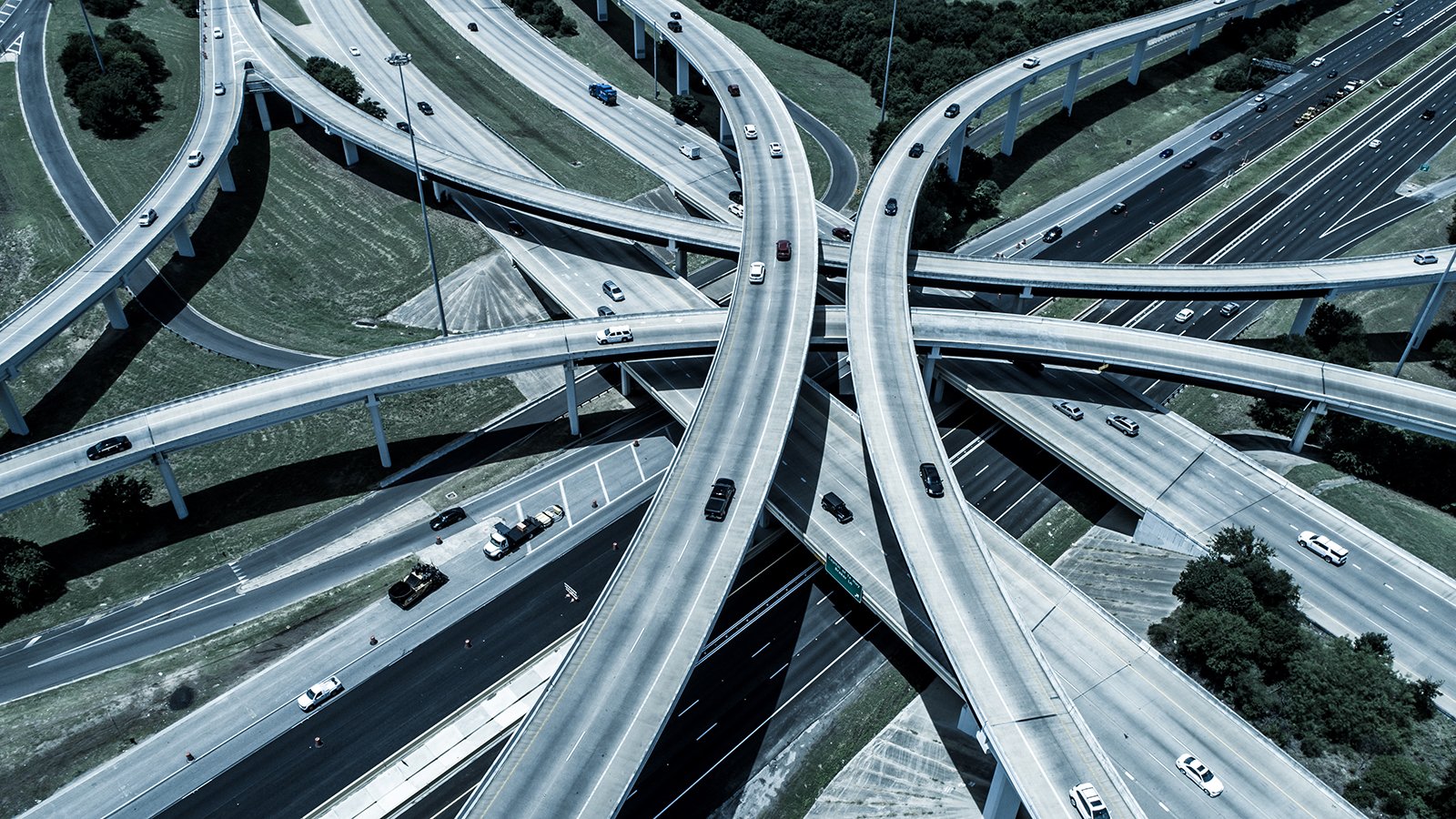
If they build it, cars will come
It’s counterintuitive: You might expect that adding more lanes to a busy highway would ease traffic. But it doesn’t.
It turns out, as multiple studies show, that expanding a highway actually sets off a chain reaction of decisions -- more businesses locate on a city’s outskirts, more people move to the suburbs, more people opt to drive instead of taking transit, and so on. Soon, traffic is just as bad, or worse, than it was before more lanes were added. Call it the Fundamental Law of Road Congestion.
The bottom line, PIRG researchers have found, is that instead of addressing the real transportation challenges that most Americans face, highway expansion projects cost truckloads of money, diverting funds away from road repair, public transit and other needs. That’s why in 2014, PIRG came up with the sobriquet “highway boondoggles.”
In the years that followed, PIRG shone a spotlight on more than 58 of these boondoggles. PIRG’s six Highway Boondoggle reports not only helped the phrase make its way into the transportation policy lexicon, they also helped stop four highway expansion projects that would have cost taxpayers up to $13.15 billion.
Wasted money, missed opportunities
In September 2014, U.S. PIRG Education Fund released our first report on highway boondoggles, written by Phineas Baxandall and Jeff Inglis. Phineas and Jeff detailed the problems, cost and return on investment of 11 highway expansion projects slated to cost $13 billion.
As PIRG staff researched, wrote and publicized subsequent editions of Highway Boondoggles, the attention they generated among elected officials, activists and the media helped put a stop to several projects. For example, officials halted the Tesoro Extension in California and the Dallas Trinity Parkway in Texas. The projects were cancelled in 2018 and 2017 respectively — the city of Dallas saved $1.5 billion by canceling the expansion and the southern California region saved $200 million. Other PIRG-targeted boondoggles have been cancelled, put on hold or delayed in Wisconsin, Illinois, New Mexico and South Carolina.
Better options to more of the same
PIRG’s transportation team also offered proactive policy suggestions at both the state and federal level. By refraining from or cancelling costly and disruptive highway expansion projects, the advocates said, government could instead invest in public transportation and adopt changes in land-use policy, road-pricing measures, and technological measures that help drivers avoid peak-time traffic.
The 2021 PIRG-backed bipartisan infrastructure bill, while still allocating too many dollars to highway projects, set aside record investments in public transit as well as better infrastructure for cyclists and pedestrians.
Photo credit: Roschetzky Photography via Shutterstock
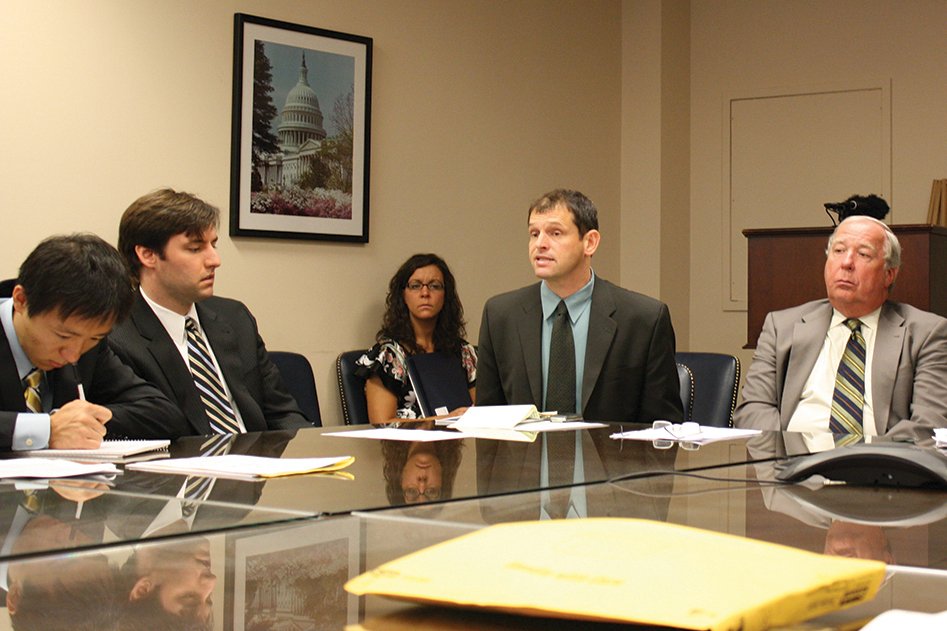
PIRG’s Phineas Baxandall (center) speaks at a Congressional briefing about Transportation in the Rayburn House Office Building in June 2009. By staff

Illinois PIRG’s Abe Scarr releases the Highway Boondoggles report in September 2014. by staff

WISPIRG’s Peter Skopec (right of speaker) stands with coalition partners at a Highway Boondoggles event in 2015. By staff




